Paris Art: Let There Be Light
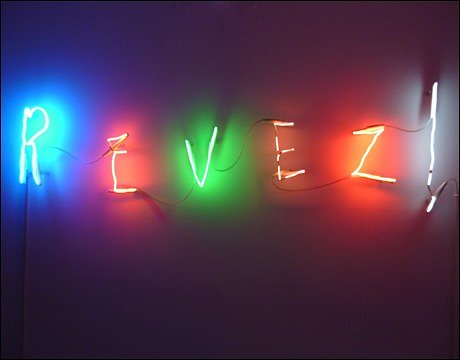
Mon 2 Apr 2012
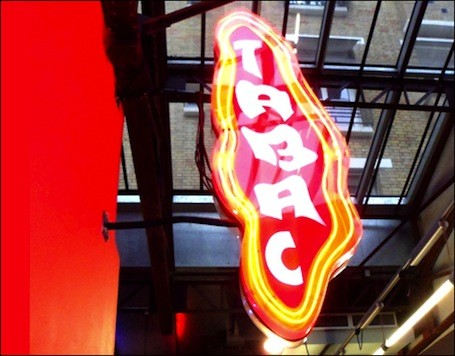
Tabac. © Franc Scurti. Courtesy La Maison Rouge.
From the Las Vegas Strip to upscale Paris art, neon signs may seem ultra-American. Yet it was the French chemist Georges Claude who created them, at the end of 1910. Claude premiered his glowing tubes at that year’s Paris Automobile and Cycle Show. Two years later, he unveiled the first neon sign—at 14, rue Montmartre, to publicize the hairdressing salon Le Palais Barbier. The Maison Rouge museum is celebrating this centennial with its show “Neon: Who’s Afraid of Red, Yellow and Blue?”
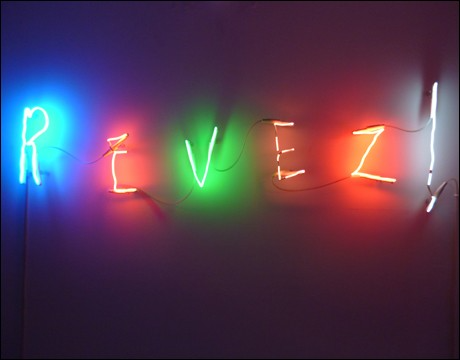
Revez! (Dream!). © Claude Lévêque. Courtesy La Maison Rouge.
Featuring more than 100 works by 83 artists, it is the first international show of neon art. If you think that has to mean stacks of fluorescent tubes, think again. For, as usual at this innovative space (an old printing factory made into a gallery), these pieces come from all over the world.
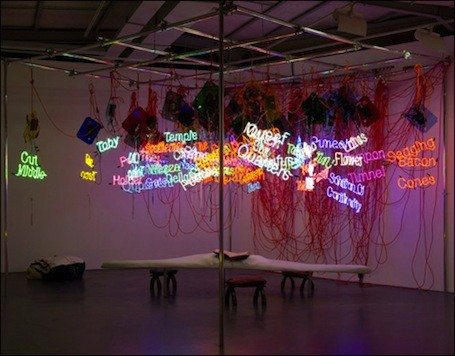
Untitled, 2004. © Jason Rhoades. Courtesy La Maison Rouge.
The expo’s artists offer a bewitching spectrum of shape and color. Carlos Cruz-Diez—born in Venezuela—plunges visitors into a bath of ethereal light. The late American Jason Rhoades creates a thicket of glittering words. Paris art star Laurent Pernot captures a pale moon in a birdcage, while Chile’s Ivan Navarro offers a disappearing “manhole.” You’ll find rich and witty art from all over Europe, North and South America—as well as much of Africa. There is also neon by unexpected big names such as Jeff Koons, Sylvie Fleury, Douglas Gordon and musician Alan Vega.
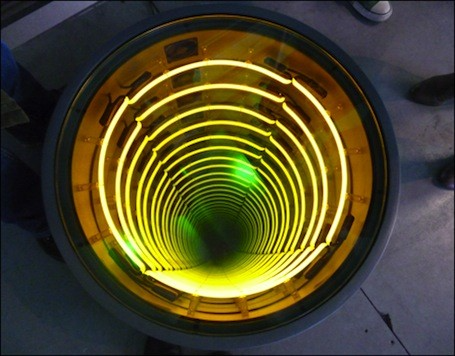
Manhole. © Ivan Navarro/Courtesy La Maison Rouge.
Despite its funky nature, the show explains neon history. Only in 1923 did neon lights cross the Atlantic. Their first appearance in the United States was in Los Angeles—where illuminated signs helped advertise the Packard car. Yet, even as neon advertising flooded the world’s main cities, artists resisted it as a medium. In 1913, when Cinzano lit up the Champs Elysées, its commercial neon drew mobs of enchanted locals. Artists like Picasso, Léger and Duchamp showed up to gawk. Yet the first piece of “neon art” only appeared in the ’30s. Even then, says exhibit curator David Rosenberg, it was first seen used as only “a stick of color.”
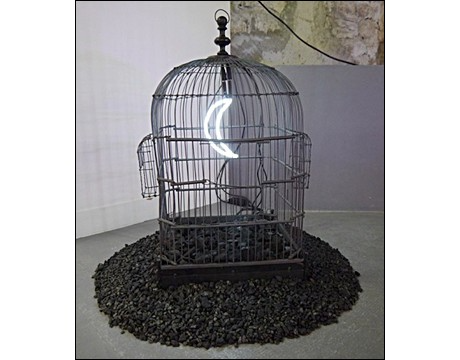
Captivité. © Laurent Pernot. Courtesy La Maison Rouge.
Artists discovered neon’s prolific nature slowly. This was partly because, to use it, they had to think in three dimensions. (Even when neon “speaks” or “draws” in two dimensions, the glass that holds its gas and electricity curves in three.) Here, Maison Rouge assembles all kinds of examples. There is poetic neon, toy-like neon, neon parody. The show takes care, though, to highlight the form’s art pioneers. They are artists like Joseph Kosuth, who worked with master glassblowers in Italy.
This is one Paris art event that’s both important and offbeat. But Rosenberg is right to say it has something for everyone. Neon’s brilliance and reflections even flatter the museum’s structure, which features glass walls around a pleasant patio. So take the time to stop by and light up your day.
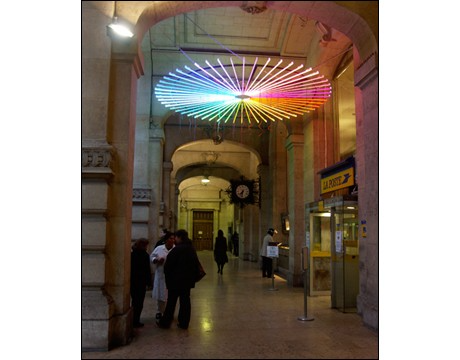
Hélicoptère (Apple Mac). © Daniel Firman, Nuit Blanche 2005. Photo by Steve Sampson.
TIP
This is a great way to meet some of the city’s best artists, such as Daniel Firman and Claude Lévêque. Firman is famous for his neon version of Apple computer’s “beach ball,” a work featured in the Nuit Blanche of 2005. Lévêque created the French pavilion at 2009’s Venice Biennale.
TIP
One science fact you can learn at the exhibition: the only true “neons” (i.e., lights made with neon gas) are red. All other colors require different gases: for white, CO2; for purple, argon; for yellow, sodium; and for blue, argon plus mercury.
TIP
The Maison Rouge café, Rose Bakery Culture, is part of the trendy Rose Bakery group; their wonderful art bookstore specializes in out-of-print books.
Related Links
Georges Claude
Maison Rouge
“Neon: Who’s Afraid of Red, Yellow and Blue?”
Rose Bakery
Editor’s note: Did you know that all our Paris walking trips are available on the iPhone?